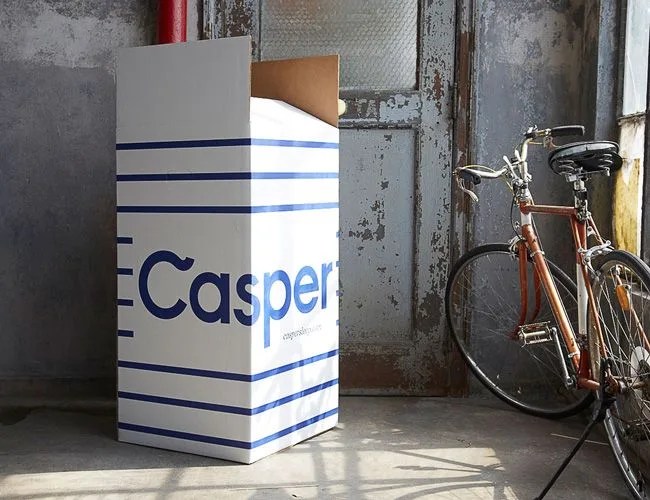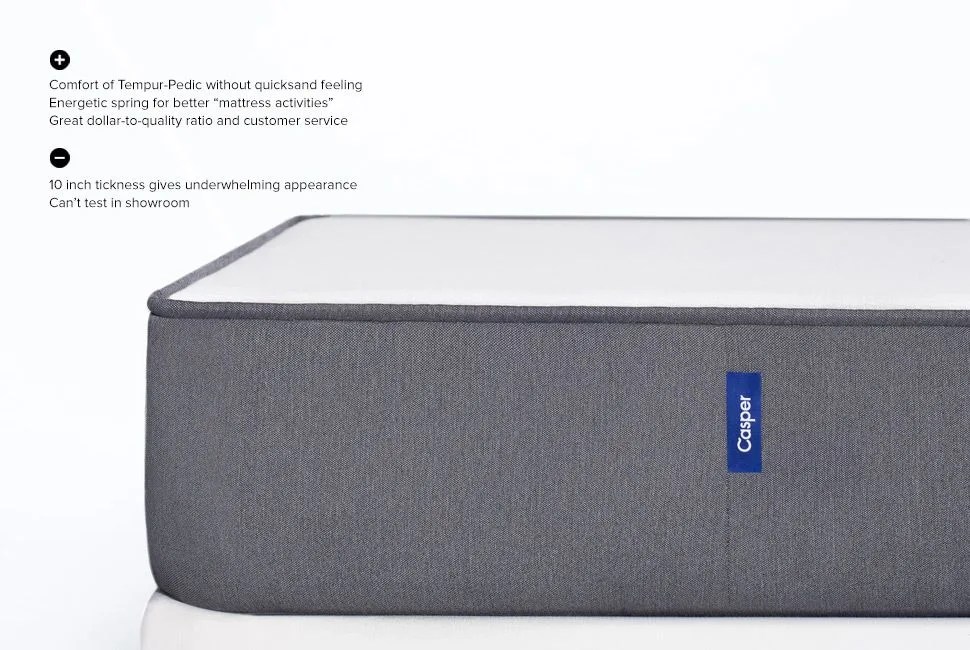Mattresses rank up there with milk and diapers as something you should never buy used. Bed bugs and DNA evidence aside, the quality of your mattress is integral to your performance at work, the gym and, unsurprisingly, in the bedroom. It’s a spare-no-expense investment, a purchase where any money saved at the checkout station will cost far more in the long run with fatigue and back pain. And if you’ve had yours for seven to ten years, it might be time to start looking for a new sleeping surface. This quest for a good night’s sleep shouldn’t be taken lightly and, after spending hours in showrooms full of mattresses, you’d be wise to consider the new Casper ($500-$950) mattress, which seems aimed to catch the traditional mattress world napping.
MORE SLEEPING ESSENTIALS: Kit: Better Night’s Sleep | Benefits of Sleep for Recovery | Essentials for Sleeping Over
Casper is an oddball. They’re a start-up mattress company, which is admittedly a tough industry to break into, especially with the trifecta of S’s — Sealy, Serta and Simmons — dominating the market. But their small size and business model lets them sell directly from company headquarters in New York City, cutting costs on salesmen and showroom space, and also keeps them transparent about business practices and attentive to customer needs. They only sell one model, a memory foam mattress, which is currently the fastest growing market segment in the mattress world. This limits their costumers’ options, but allows Casper to undercut the price of comparable mattress by a large margin. Queen-sized Tempur-Pedic mattresses start at about $1,500 for the base model and top off at $7,500; the queen-sized Casper is $850, with free shipping.
Their mattresses, with a base layer of memory foam — the same quicksand stuff featured in the mattresses my grandparents sleep on — and a top layer of expensive, supportive latex foam, combine the best materials on the market. The founders wanted to combat the sinking, heat-retaining feel of memory foam by topping it with something that allows air circulation and a little spring. You can’t jump around while a wine glass is on the bed, but you can do something that’s rather difficult on a traditional memory foam mattress: have sex.
This was the second aspect of the Casper mattress that CEO Philip Krim mentioned to me at Casper’s launch party last April and, along with the price and shipping method, it steadies the brand’s aim squarely on a younger demographic. Krim said he set out to maintain the comfort of a foam mattress, while adding back the certain spring you need for what is arguably a mattress’s second most important feature.

The mattresses are sold online (a place mattresses are rarely sold, and one the company is trying to bring more mainstream), so while customers can’t go to a showroom and run from Casper to Casper, lying on each one for a few minutes before buying, the company does offer a 100-day test period. The lack of a store also means Casper mattresses are shipped directly to you for testing. They arrive compressed to fit a box the size of two moving boxes stacked on top of each other. This allows them to be delivered same-day via Uber or bike messenger to residents of New York, and within five days nationally. If a customer isn’t satisfied after three months, the company will pick the mattress back up, hassle free.
